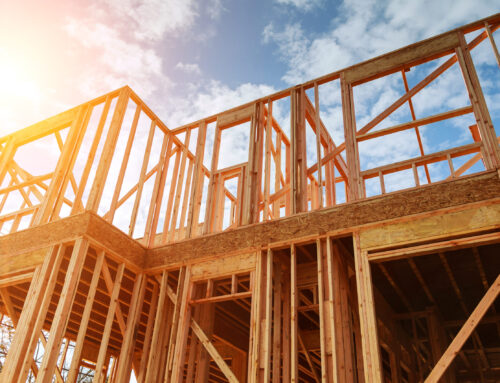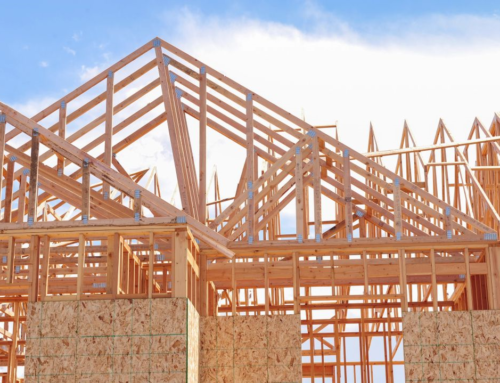Wallach Wisdom: Thoughts on Mortgage Interest Rates & If There‘s Relief in Sight
To understand my view on mortgage rates, let me first explain how short-term (monthly or daily) interest rates are set, then move on to what drives long-term interest rates (30-year mortgages or 10-year US treasury bonds).
Interest Rates
Short-term interest rates are set by the Federal Reserve Board (FED). They meet roughly twice per quarter and consider changing the rate the government charges banks for short-term funds, which immediately changes the prime rate (again, short-term borrowing rate). These changes are made based on how the economy is doing (if it’s growing and the state of unemployment) and inflation. Generally, if inflation is high, the government will raise interest rates. When inflation is low, interest rates will lower. The idea is to stimulate the economy enough to grow and maintain almost full employment while not making the economy grow so fast that inflation increases too much. The next likely move will be to lower short-term rates, as most economists think that rates will be lowered one to two more times in the second half of this year.
Mortgage Rates
Now, let’s explore mortgage rates. The mortgage rate market is not completely controlled by the government, but several government actions impact these rates. First, consider how supply and demand impact bond pricing and interest rates. Some businesses, banks, governments, and individuals want to buy US government-backed debt and US home mortgages. They have certain levels of demand, like how much they want and at what prices.
Supply
Then there is supply. Supply is made up of US government borrowings and mortgages being created or sold. Think about what happens when the supply of something is low, and demand is high: the price goes up. The reverse is also true. If there is too much supply and insufficient demand, the price will go down.
Bond Interest Rates
Now, think about how interest rates work on bonds. If you buy a bond with 5% interest and pay $1,000 for that bond, you are getting $50 per year in interest. If there is a lot of demand for that bond, you can sell it for $1,250, but the person buying it still gets $50 a year. That means the person buying it only gets a 4% return ($50/$1,250). Rising prices on bonds lower interest rates and falling prices of bonds increase interest rates. When many bonds are trying to be sold and a normal amount of demand (oversupply), prices drop, and rates increase. That is what is happening in today’s economy.
What are bonds?
Bonds are a fixed income instrument that represents a loan made by an investor to a borrower (typically corporate or government). In return, the government or company agrees to pay you interest for a certain amount of time in addition to the original face value of the bond.
Deficit & Demand
Exploring this further, during the prior federal administration, the government was funding much of the annual budget deficit with short-term borrowings, assuming that it would be cheaper for the government to borrow at these expensive rates for a shorter period of time. Then, they thought they could borrow that money for more affordable and extended periods when long-term interest rates dropped. On top of that, the current administration is also running deficits. This year, the government might borrow 9 trillion dollars to fund new deficit spending and reborrow money to pay off all of the debt coming due this year that it had previously borrowed. Add to that demand the borrowings for mortgages, and there is a lot of supply of debt to be purchased.
To make matters worse, the government tried to lower mortgage rates during the pandemic by buying mortgages from the FED. This doubled the FED’s balance sheet but increased the demand for mortgages, driving up the price and lowering the interest rate. For the last several years, the FED has been offloading those mortgages and has reduced their portfolio by about half of the bloat they purchased during the pandemic. Again, this offloading increases the supply of mortgages, decreasing the price and increasing interest rate.
While the federal government doesn’t set the long-term mortgage rates, the four most influential factors to them are:
- How much demand there is for long-term US government and US residential mortgages (or similar products)
- How much the federal government is borrowing that week
- How many mortgages are created and sold that week
- How much the FED is buying or selling mortgages that week
As you can see, two of those four triggers are FED-controlled.
Where is this headed?
So, where is all of this heading? Demand for total US debt and US residential mortgages will not change much over the next two years. All kinds of things could happen to prove that assumption wrong, but this is not a short-term issue. Government borrowing is not likely to change in the near future. I believe the Federal Reserve will continue to unwind the purchases of mortgages for at least a year, and maybe two, and these factors lead to the current level of mortgage interest rates. I expect the President will select someone to run the FED who will stop the government from unwinding pandemic mortgage purchases next summer, or they will naturally stop because the FED will feel they have achieved their goal. That will lower mortgage interest rates some.
It is also possible that the FED will lower short-term rates, driving more investors towards long-term mortgages. This would increase the demand for long-term mortgages, therefore increasing the price and decreasing the interest rate.
What You Can Do
We are currently in the middle of where mortgage rates have been in the last two years, and I suspect no great movement down until next summer. Currently, and for the previous year, there has been an interesting phenomenon: some mortgage investors want lower mortgage rates. This is because they don’t want to buy 7% mortgages that will refinance in a few years but instead would like 5.99% mortgages that won’t refinance (because rates won’t drop low enough to make that worthwhile). They can get paid a fee to lower that rate. Usually, that fee might be 8% (8 points), but a few are offering 3.25% at the time of my writing this. They can get the 3.25% and have a 5.99% mortgage for some time.

Rate buy-downs are a great advantage to homebuilders, and they should jump on this opportunity now. Builders can offer an interest rate buy-down to potential homebuyers as a way to make listings more competitive. Many buyers come prequalified and, therefore, won’t take you up on it, but some will. You can market this. Consider marketing the payment savings (value) rather than the rate. This works best for starter homes as you are competing with the increasing rental rates.
Get Started Today
Talk to your Shepherd’s Finance regional sales manager today to learn about our rate buy-down program and other builder growth programs to help you sell your homes faster and grow your business.
We invite you to consider how Shepherd’s Finance can help you empower your residential construction projects. With our tailored lending solutions and business growth services, we’re here to support you at every step. Thank you for being with us—let’s build something remarkable together! Find your regional sales manager today for more information or to get started. Happy building!





Stay In Touch